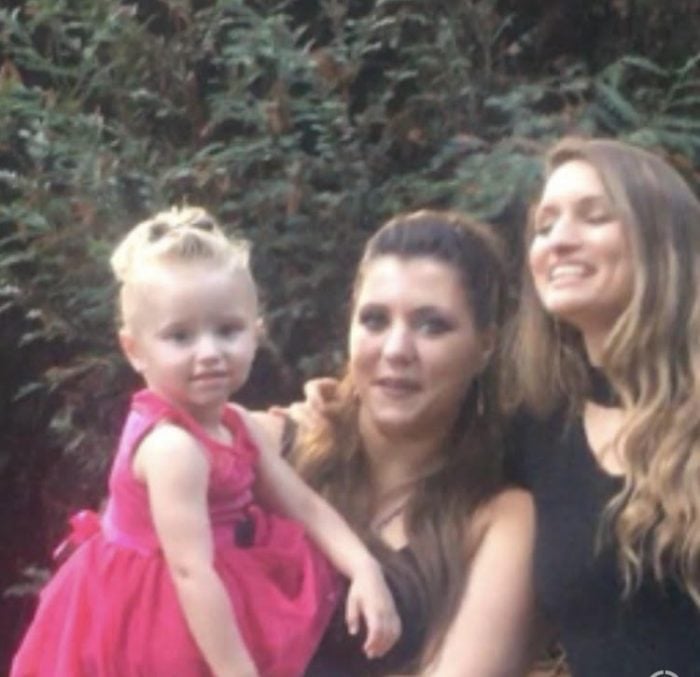It’s been three weeks since I learned of my sister’s death.
She left her body after a battle with an on-and-off-again drug addiction to heroin. I’ve experienced a state of shock and human pain unknown to me in my experience on this planet. “There are no words,” as one of my friends had put it—someone whose grandparents were brutally annihilated by the Nazis in World War II.
I felt torn to share publicly on social media platforms or tell my friends of this catastrophic event. There is a phenomenon in society to stigmatize drug addiction—a terrible misunderstanding of this mental health crisis. My sister was not just some junky: she played piano, crocheted in meticulous detail, was a mother, smart, talented, and beautiful. Addiction is a disease and the “negativity” it brings to families, friends, and society is mostly spoken to those who are experiencing the impact behind closed doors, swept under a rug, or pushed under a bridge.
We have few logical ways of handling this disease as a whole in our nation. Drug overdoses, homelessness, and mental health issues are running rampant with criminalization and lack of competent humane laws and social services. The “negativity” and ugliness these events bring is a long cry from glamorous, filtered realities.
I was moved by a quote I came across from Waylon Lewis of Elephant Journal. He states, “Siddhartha didn’t become the Buddha by hiding within his palace walls, clutching his *Good Vibes Only* pillow.”
I should introduce myself: my name is Stephanie. I spent my early adult life, into my mid to late 20s, in the fashion world. I was earning a degree in design and set to enter, by recommendation of my mentors, a master’s program for what’s arguably the best design school in the world: Central Saint Martins in London.
I never quite made it to London. I diverted the path after sourcing textiles for a company I was working for at the time in India and completed a yoga teacher training at an ashram in the foothills of the Himalayas. I learned later the ashram may have been devastated by flooding—climate change-related. I studied with monks and grew ever more fascinated with the healing arts and antithesis of the material world.
After long deliberation, I decided I could no longer continue with fashion as it were. I felt my creative energy was consumed by an industry that did not have humanity’s best interest at heart. In my experience, this drive was plagued by insecurity, as well as devouring almost 40 percent of the world’s precious resources. According to BBC, 85 percent of textiles and materials end up in a landfill and only 1 percent is recycled, a great contribution to Earth’s climate disaster and it seemed, at the time, so unnecessary.
I decided to put fashion aside for a while and focus on teaching yoga, breathing, and meditation, as well as study a new path in nursing. I thought, “I can always pick it up again later when the world is ready to embrace the sustainable fashion movement.”
I thought that if I became more invested, I would never make a good contribution to this planet. I felt I was only serving myself, and the jobs that seemed to pay well at the time were the ones that were most harmful to the human psyche and the environment. Having a master’s and working for McQueen or a big fashion house didn’t appeal to me anymore. I was mused dearly by McQueen but, the year I was set for London, he tragically committed a drug-fueled suicide—in a similar way my sister had only a few weeks prior.
Even with my time in India, on a quest for Vedic knowledge, yoga, and Buddhism, nothing could have prepared me for the tragic event of losing my sister.
It felt like I had two options: stuff it down inside a place where the pain cannot find me or acknowledge it with a tiny post on social media—followed by quickly reposting current events, inspirational quotes, memes, meaningless and meaningful things so no one would really notice what was going to change me forever.
Can I face this? Feel this? Feel the physically broken shatter in my chest walls—as if it can be avoided?
I have to let the tears come in waves, like waterfalls that pour down my face, followed by panic attack breathing, shaking, and finally, a strong teacher inside who consciously makes a choice, places a pillow on the floor, and sits.
There is a reason these Eastern practices are continuing to grow worldwide—why we adopt cultivating stillness, consciousness, breathing techniques, yoga, and mindful meditation. We need this medicine in our cabinet and these tools in our toolbox—we are not safe here from pain; our fate is inevitable. Pain will find us in this lifetime. When we do not face or openly deal with pain and fear, they can manifest in other ways within human behavior. This is a human condition and it’s an existential one.
These days, mascara is just a memory; it’s something I used to be able to wear without it dripping worthlessly down my face. Now I am connected to the thickest part of my known human suffering, finally allowing myself to think and feel:
Will I ever be the same again?
Plagued with thoughts of, “Where did she go?” I pull upon a practice that allows for human suffering, embraces it, and doesn’t ignore its existence.
We are brought here, to an imperfect world, and as soon as we touch down as babies—we are crying. We are in deep need of love and awareness. It feels unfair, and at times, cruel. The combined inclusive effort of spreading love and awareness continues to make the world more balanced for all humans—not just the privileged few—but for everyone who is graced enough to step foot here.
I read Siddhartha by Herman Hesse when I was 15. I sat under a redwood tree in the quad, while attending some courses at Cabrillo, a community college in Santa Cruz that allowed teenagers who were in an Independent Study program to attend. The story of Siddhartha is about a prince who was enclosed to the walls of a palace, in a synthetic world, created for him by his King Father.
This world would be one of only beauty and happiness, what Waylon calls, “Good vibes only.” He was sheltered from the elderly, death, ugliness, and impoverishment. Of course, this is an unrealistic ideal, and eventually, Siddhartha, after some time in exalted beauty, heard the song or, raga as it were, of sadness.
When introduced to the pain, he became fascinated and left the palace walls. He forever devoted his life to this suffering, on a quest to understand the meaning behind its existence. Pain and suffering coupled with love and joy: within this dualism are what it means to be human. While experiencing both extremes and eventually walking the middle path, or razor’s edge, Siddhartha is said to have reached nirvana, the enlightened one, to what we now know as the Buddha.
In my recent days of suffering, I was worried about speaking out to friends or colleagues. I might’ve repelled people away from me—breaking whatever this façade of filtered reality I had created for myself. There is a growing illusion of an airbrushed world, in idol worship of celebrities and influencers in the audacity of perfectionism. An idea that sounds a lot like Siddhartha’s palace walls.
It’s human to derive pleasure from beauty and positive experiences—a smile, a kind word, nature, love, connections, compliments, and aesthetically pleasing things to wear or gaze upon are wonderful experiences. Should we throw stones and aim for ivory towers simply because the rich seem to have more happiness and positive experiences? Although cliché, does money buy happiness?
There’s not enough money to bring someone you love back from the dead.
Like never before, people are given a voice, the nameless are named and anyone with access to the internet and a device is equipped with a digital soapbox. Third-world countries are growing and changing with technology, a chance to rise up from what seems like hopeless situations. Painfully apparent is the digitally enhanced stark contrast between beauty standards and wealth gaps. The truth behind any illusory façade of comfort is suffering in one form or another. Pain has no socio-economic bounds.
Sri Aurobindo, the scholar who translated Sanskrit-written epics into the English language—most of which while a prisoner of war—famously quoted from the book of Savitri, “My God is love, and sweetly suffers all.” It is because we love that we feel suffering and pain. And because suffering looks different in comparison to some undeserved, we may feel silenced into swallowing our pain.
It is hard to ask for help and admit to the world how hard life feels, or point out the imperfections and highlight each flaw to our own human condition. Who wants to become a victim of circumstance, or feel the embarrassment, pity, or caste from better society by the *good vibes only* police lurking in the parasitic collective consciousness?
I have this saying to myself, “Pity is the lowest form of empathy; don’t pity, help.” There are tragic victims to tragic events. We can become blinded under the machine of “best life,” imprisoned to see through rose-colored glass delusions. Illusions are just that, illusory and easily shattered when something less than favorable happens.
The truth behind every filtered reality is the human counterpart to each and every one of our imperfect lives. Powerfully impactful changes are occurring daily, yet one-third of the planet still lives in extreme poverty, which has shifted significantly in the past 20 years. Although good things are happening, when old problems die out, new problems form.
The word utopia was translated from the Ancient Greek language to mean “no-place” and at any point in time, a non-existent society. There are no number of characters, tears, anger, pleads, bargains, or time machines that will bring my sister back from the dead.
I can’t help but conjure ways in my mind where things could have been different. Those magic words—why didn’t I just happen to call her that day and tell her I loved her, or send a letter, or what if I did this, or what if I did that. In these moments, I draw upon the tools I have to cope with—the medicine in my cabinet: my yoga, meditation, Buddhist teachings, and now, radical acceptance.
In The Tibetan Book of The Dead, the soul is said to move through bardo—the in-between death and rebirth as the hearing soul. Although I have no idea what the truth could be to what happens next, I seem to gravitate to the requests of these Buddhist teachings, in that I ironically remember her in her best life, her innocent “true self” who was generous and loved everyone so deeply, and because of which, suffered deeply.
As it is, all things are impermanent and subject to change. There are some inevitable lasting features to have been given human life—we were all born, and at some point, will all leave here as well. Where we go after this visit is, at this point in the journey, an unsolvable mystery. There seems to be a large scope of work needed to leave this Earth in much better condition than it was found.
 Share on bsky
Share on bsky






Read 1 comment and reply